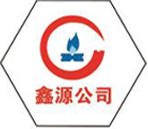
Nov . 27, 2024 20:33
Back to list
Natural Gas Pressure Regulator System Overview and Functionality
The Organization of Natural Gas Pressure Regulation
Natural gas plays a crucial role in today's energy landscape, serving as a primary source for heating, electricity generation, and industrial processes. However, the safe and efficient use of natural gas depends significantly on proper pressure regulation systems. This article explores the organization of natural gas pressure regulation, outlining its importance, mechanisms, and regulatory frameworks.
Importance of Pressure Regulation
Natural gas is delivered to consumers through an extensive network of pipelines. Throughout its journey from production to end-users, the pressure of the gas needs to be managed meticulously. High pressure can lead to potential hazards such as leaks, explosions, or damage to infrastructure, while low pressure can result in insufficient supply for end-use applications. Hence, regulating gas pressure is critical for both safety and efficiency in the natural gas sector.
Mechanisms of Pressure Regulation
The organization of pressure regulation involves several mechanisms and technologies, primarily focused on ensuring that gas is delivered at optimal pressure levels. Pressure regulating stations (PRS) are typically installed at various points along the distribution network. These stations include various components, such as pressure regulators, valves, and safety devices, all designed to control and monitor the pressure of gas flowing through the system.
1. Pressure Regulators These devices adjust the pressure of the gas from higher transmission levels to lower distribution levels. Regulators automatically balance pressure, ensuring that the amount of gas released meets consumer demand without exceeding safe limits.
.
3. Monitoring Systems Technological advancements have introduced sophisticated monitoring systems that track pressure levels in real time. Sensors and control systems allow operators to maintain optimal pressure settings and respond swiftly to any anomalies.
منظم ضغط الغاز الطبيعي

Regulatory Framework
The regulation of natural gas pressure is overseen by various governmental and industry agencies. In many countries, specific standards and guidelines must be adhered to, established by organizations such as the American National Standards Institute (ANSI) in the United States or the International Organization for Standardization (ISO) globally.
These organizations ensure that all components in the natural gas pressure regulation system meet safety and performance standards. Regular inspections and certifications are mandated to maintain compliance, thereby safeguarding both the infrastructure and the communities that depend on natural gas.
Challenges and Future Directions
Despite robust systems in place, challenges remain. Aging infrastructure, increasing demand for natural gas, and the push for sustainability pose significant hurdles. As the industry evolves, so too must the organization of pressure regulation systems.
Innovations such as smart grids and IoT technology are likely to transform pressure regulation, enabling better data collection and analysis. This shift will allow for predictive maintenance, enhancing both the safety and efficiency of natural gas distribution networks.
Moreover, as the world moves towards greener energy sources, the role of natural gas is being re-evaluated. Pressure regulation systems will need to adapt to integrate renewable energy sources, ensuring that natural gas remains a reliable component of the evolving energy mix.
Conclusion
The organization of natural gas pressure regulation is a vital aspect of the energy sector. Through advanced technologies, regulatory frameworks, and ongoing innovations, we can ensure the safe and efficient delivery of natural gas to consumers. As the demand for energy continues to grow, prioritizing effective pressure regulation will be crucial in maintaining safety, performance, and reliability in natural gas distribution.
Latest news
-
Safety Valve Spring-Loaded Design Overpressure ProtectionNewsJul.25,2025
-
Precision Voltage Regulator AC5 Accuracy Grade PerformanceNewsJul.25,2025
-
Natural Gas Pressure Regulating Skid Industrial Pipeline ApplicationsNewsJul.25,2025
-
Natural Gas Filter Stainless Steel Mesh Element DesignNewsJul.25,2025
-
Gas Pressure Regulator Valve Direct-Acting Spring-Loaded DesignNewsJul.25,2025
-
Decompression Equipment Multi-Stage Heat Exchange System DesignNewsJul.25,2025

